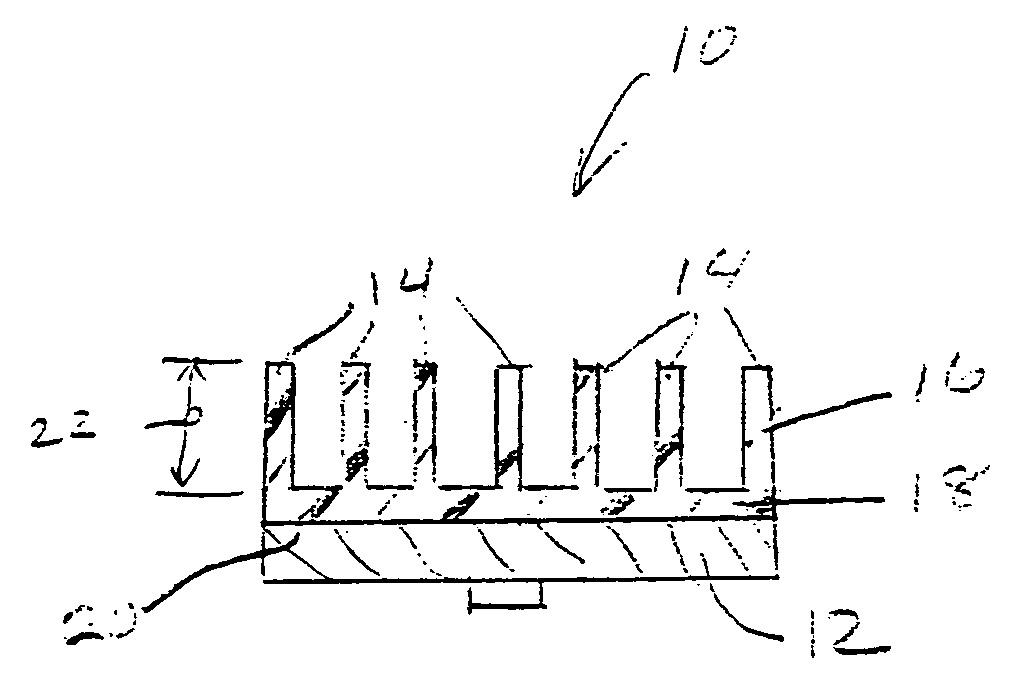Optimized heat sink using high thermal conducting base and low thermal conducting fins
a heat sink and low-temperature technology, applied in the field of heat sinks, can solve problems such as system failure, affecting the performance of the overall system, and affecting the performance of the individual components,
- Summary
- Abstract
- Description
- Claims
- Application Information
AI Technical Summary
Benefits of technology
Problems solved by technology
Method used
Image
Examples
example
[0057]Graphite sheets with a weight per unit area of 70 mg / cm2 with dimensions of approximately 30 cm by 30 cm were impregnated with epoxy such that the resulting calendered mats were 12 weight % epoxy. The epoxy employed was a diglycidyl ether of bisphenol A (DGEBA) elevated temperature cure formulation and the impregnation procedures involved saturation with an acetone-resin solution followed by drying at approximately 80° C. Following impregnation, the sheets were then calendered from a thickness of approximately 7 mm to a thickness of approximately 0.4 mm and a density of 1.63 g / cm3. The calendered, impregnated sheets were then cut into disks with a diameter of approximately 50 mm and the disks were stacked 46 layers high. This stack of disks was then placed in a TMP (Technical Machine Products) press, and cured at 2600 psi at 150° C. for 1 hour. The resultant laminate had a density of 1.90 g / cm3, a flexural strength of 8000 psi, a Young's modules of 7.5 Msi (millions of pounds ...
PUM
| Property | Measurement | Unit |
|---|---|---|
| Power | aaaaa | aaaaa |
| Height | aaaaa | aaaaa |
| Temperature | aaaaa | aaaaa |
Abstract
Description
Claims
Application Information
 Login to View More
Login to View More - R&D
- Intellectual Property
- Life Sciences
- Materials
- Tech Scout
- Unparalleled Data Quality
- Higher Quality Content
- 60% Fewer Hallucinations
Browse by: Latest US Patents, China's latest patents, Technical Efficacy Thesaurus, Application Domain, Technology Topic, Popular Technical Reports.
© 2025 PatSnap. All rights reserved.Legal|Privacy policy|Modern Slavery Act Transparency Statement|Sitemap|About US| Contact US: help@patsnap.com



